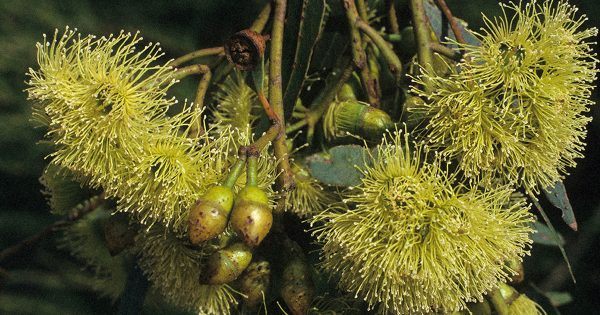
How can we predict how our urban trees will perform into the future?
Most young trees look great in the nursery. While tree stock are well-watered and cared for, this is not necessarily the best indicator of what will thrive for decades after planting. With increased extreme weather events leading to even more stress on our trees, monitoring and forecasting tree performance must become a vital part of urban planning and development.
Street trees are often selected according to availability, history, horticultural experience, and even the latest tree trends. However, there is little thought given to how well they will perform down the track. At municipal levels (such as local councils and developers), this narrow band of ‘ideal’ street trees can lead to low species composition. And with overreliance on certain species and genera, there is an increased threat of catastrophic loss from pests, drought, storms and other stressors. Additionally, abiotic disorders such as drought, heat stress due to climate change, and reduced tree root environments and root damage resulting from soil compaction, can lead to stressed trees predisposed to pests and diseases and subsequent decline.
The health and longevity of urban forests in Australian cities are increasingly at risk. When creating sustainable urban landscapes, selecting suitable trees for a changing climate is more important than ever.

Do we know how street trees will respond to climate change?
Trees are long-lived organisms and will experience changes in climate during their expected lifespan. An urban forest formed by climate-ready tree species is likely to efficiently produce ecosystem services that can contribute to environmental quality – and consequently, human health and wellbeing. With this in mind, tree managers, landscapers and urban foresters must incorporate climate predictions into their tree selection decisions.
While research such as the program is slowly improving our knowledge, there is currently limited testing of potential planting stock and no clear understanding of how resilient plants are to climate change. Increasing long-term studies on tree populations will help us understand plant response to these environmental fluctuations.
The difficulty in determining which trees are suitable for predicted climate change lies in the various regions and provenances of species. This is in part because the effects of climate change are uncertain, and in part because the urban environment presents other challenges to successful tree selection.
Considering the right approach to tree selection
Planting trees – lots of different kinds of trees – helps species that are better adapted to the site conditions come to the fore through a process of elimination. However, in cities where there are varied microclimates, there is a limitation on available spaces for trees. Along with restricted resources, this does not give us the luxury of eliminating less resilient trees on a bulk scale.
Thus, a more comprehensive and methodical approach is required. This helps us better identify those tree species that are best suited to existing and predicted site conditions and achieve the ultimate objective: a good match between species and a given habitat. Some of the contributing factors to these decisions include:
- An understanding of the physiological or morphological mechanisms that provide trees with resilience
- How they might respond when cultivated
- Mass propagation
- Ease of cultivation
- Design qualities; and
- Site conditions, particularly soil qualities.
Climate adaptable species and ‘phenotypic plasticity’
Since trees are immobile organisms and are unable to move when environments become unfavourable, their ability to adapt to changing conditions is an important consideration. According to Gratani (2014), ‘phenotypic plasticity’ is one of the mechanisms that plants use to cope with variations in the environment. Species with greater adaptive plasticity may be more likely to survive in new environmental conditions. Thus it is important to identify those traits where plasticity could play a decisive role in a plant’s response to global climate change, as well as at an ecosystem level.
Other than the traditional tree selection approaches mentioned, current best practice of tree selection typically uses bioclimatic envelope modelling. Also known as species distribution or ecological niche models, this helps predict geographic ranges of organisms as a function of climate. However, as mentioned, there are other environmental site factors, particularly soil characteristics, that affect plant performance.
Developing a tree monitoring process in Melbourne
This year, Treelogic is launching an urban tree monitoring project. This will provide information to tree managers about how their new plantings are performing in urban landscapes. The monitoring project was developed to apply scientific method, be easily applied and repeated, and be portable and undertaken in the field.
Background: Treelogic has considered more traditional methods of measuring tree growth, including height and DBH, which are useful in providing quantitative data on a tree’s past growth rate, however are somewhat limited in providing informing on current tree vitality. We are aware of common examples of plant acclimation responses to increased temperatures (which can be reliably measured over a performance monitoring period), including changes in physiological processes such as photosynthetic rate, changes in leaf and shoot morphology, and changes in growth patterns.
Dynamic measurement: The new Treelogic methodology is designed to be dynamic and provide real-time measurement of tree vitality through chlorophyll fluorescence. This type of dynamic assessment is well suited to provide comprehensive information on plant vitality that could aid in the analysis of plasticity and adaptability of different tree species in complex urban environments.
Plant, soil and site characteristics that we propose to monitor:
- Photosynthetic efficiency via chlorophyll fluorescence (Arborcheck)
- Monitoring and measuring of growth and foliage characteristics
- Soil moisture (TDR meter)
- Soil bulk density
- Average site temperatures
Over time, the project will provide quantifiable, useful evidence of plant performance within given urban landscape situations. This will not only increase our understanding of plant resilience during long-term environmental change but also allow tree planters, councils and developers to achieve the best results for sustainable urban landscapes.
By Stephen Frank
Managing Director, Treelogic
Download the PDF of “Reading the (tree) leaves” here
*Feature photo credit: “Eucy flowers” by Dahms, 2009
Practical guidelines for tree selection in urban areas around the world
- Recommended Urban Trees provides site assessment and tree selection for stress tolerance, Bassuk et al. (2009), North American.
- Climate-Species-Matrix by Roloff et al. (2009) looks at suitability for future tree species in urban areas, according to drought tolerance and winter hardiness that focuses on street trees, German.
- The CITREE database provides decision support for urban tree species selection (TU Dresden 2016).
- The ‘Right Tree for a Changing Climate’ database (UK Forestry Commission 2015) provides information and guidance on selecting suitable species that are adapted to expected changes in climatic conditions.
References and bibliography
Bassuk, N., Curtis, D.F., Marranca, B.Z. & Neal, B. (2009): Recommended urban trees: Site assessment and tree selection for stress tolerance, Ithaca, New York. 122 pages. Available at: https://blogs.cornell.edu/urbanhort/outreach/plant-selection/recommended-urban-trees/ [Accessed February 12, 2019].
Brune, M. (2016). Urban trees under climate change. Potential impacts of dry spells and heat waves in three German regions in the 2050s. Climate Service Center, Report 24. Retrieved from https://www.climate-service-center.de/imperia/md/content/csc/report24.pdf
Cordell, S., Goldstein, G., Mueller-Dombois, D., Webb, D., Vitousek, P.M. (1998). Physiological and morphological variation in Metrosideros polymorpha, a dominant Hawaiian tree species, along an altitudinal gradient: the role of phenotypic plasticity. Oecologia 113: 188–196.
Cregg, B. & Ellison, D. (2016). Urban Tree Selection in a Changing Climate. Michigan State University, Department of Horticulture and Department of Forestry. Retrieved from: https://www.ecolandscaping.org/10/trees/urban-tree-selection-in-a-changing-climate/ [Accessed: 12/2/19].
Duhme, F. & Pauleit, S. (2000). Assessing the environmental performance of land cover types for urban planning. Landscape and Urban Planning 52(1):1-20
Gratani, L. (2014) Plant Phenotypic Plasticity in Response to Environmental Factors. Advances in Botany. Volume 2014, Article ID 208747, 17 pages.
Hirons, A. D., & Percival, G. C. (2012). Fundamentals of tree establishment: A review. Trees, People, and the Built Environment. Forestry Commission, Edinburgh, UK, 51-62.
Hovenden, M.J., Vander Schoor, J.K. (2003). Nature vs nurture in the leaf morphology of Southern beech, Nothofagus cunninghamii (Nothofagaceae). New Phytologist 161: 585–594.
Jim, C. Y. (1990). Evaluation of tree species for amenity planting in Hong Kong. Arboricultural Journal, 14(1), 27-44.
Kramer, K. 1995. Phenotypic plasticity of the phenology of seven European tree species in relation to climatic warming. Plant, Cell and Environment 18: 93-104
McPherson, E. G., Berry, A. M., & van Doorn, N. S. (2018). Performance testing to identify climate-ready trees. Urban Forestry & Urban Greening.
Nicotra, A.B., Atkin, O.K., Bonser, S.P., Davidson, A.M., Finnegan, E.J., Mathesius, U., Poot, P., Purugganan, M.D., Richards, C.L., Valladares F., and van Kleunen, M. (2010). Plant phenotypic plasticity in a changing climate. Trends in plant science. 15(12):684-692.
Pauleit, S. (2003). Urban street tree plantings: identifying the key requirements. In Proceedings of the Institution of Civil Engineers-Municipal Engineer,156(1), pp. 43-50. Thomas Telford Ltd.
UK Forestry Commission (2015): Right Trees for Changing Climate Database, web page. Available at: http://www.righttree4cc.org.uk [Accessed February 12, 2019].
Wahid, A., Gelani, S., Ashraf, M., & Foolad, M. R. (2007) Heat tolerance in plants: an overview. Environmental and Experimental Botany 61, 199-233.